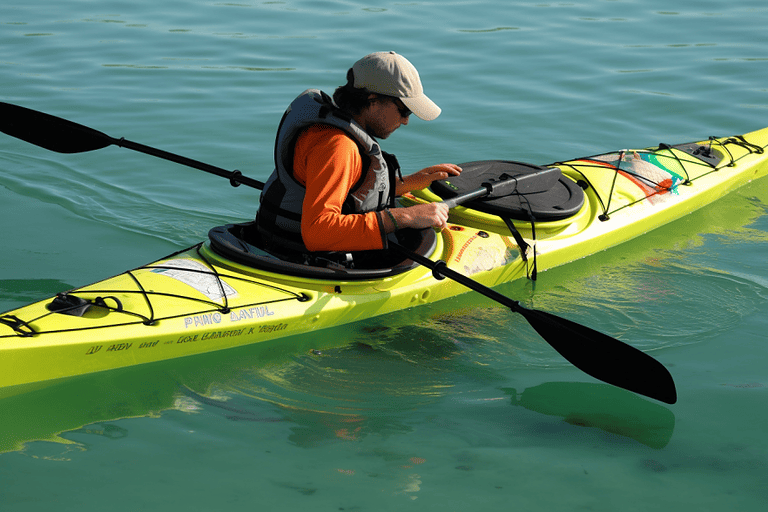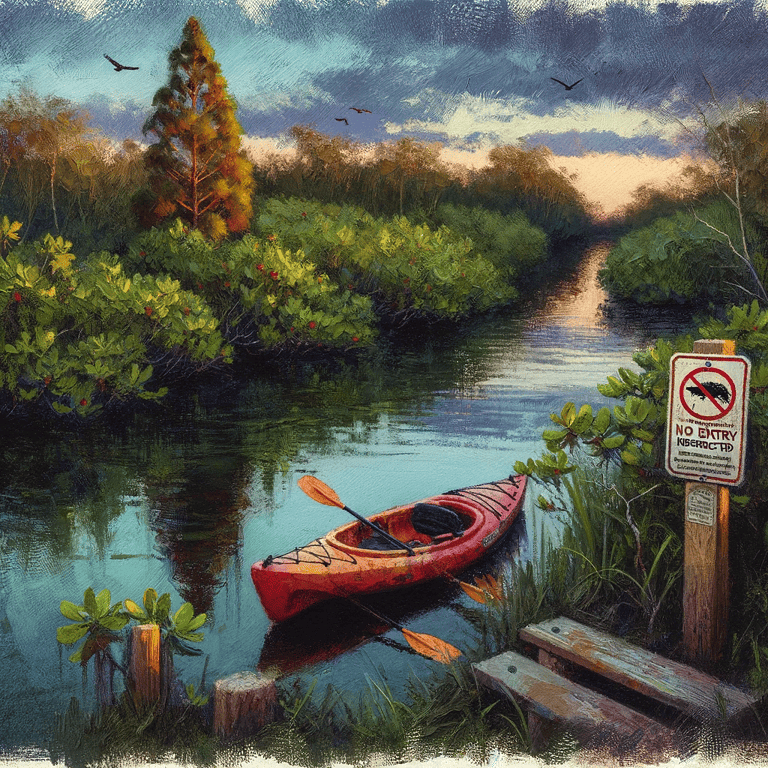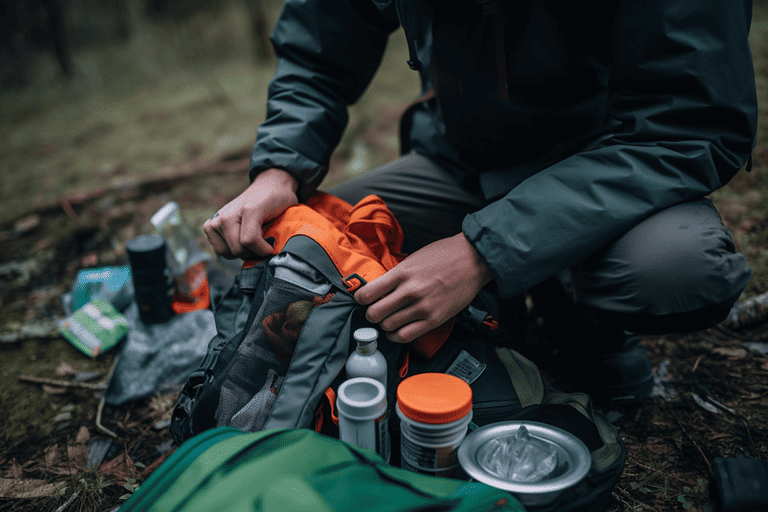Maximize Stability & Control: Claw Anchor for Kayak Exploration – Essential Tips & Technique
If you plan to anchor your kayak, a claw anchor is an excellent choice. Claw anchors are designed to dig into the bottom and hold fast in almost any type of substrate, making them ideal for use with kayaks. In this article, we’ll take a closer look at how to use a claw anchor with your kayak, including choosing the right size and weight, deploying and retrieving the anchor, and maintaining it properly.
One of the biggest benefits of using a claw anchor with your kayak is that it provides stability when you need it most. Whether you’re fishing or taking photos, having an anchored kayak allows you to stay in one spot without drifting away. Additionally, anchoring can help reduce fatigue since you don’t have to paddle against wind or current constantly. But before you can enjoy these benefits, there are some things you need to consider when selecting and using a claw anchor with your kayak.
Key Takeaways
- Claw anchors are ideal for kayaks as they provide stability, reduce fatigue, and hold fast in any substrate.
- Choosing the right size and weight of the claw anchor is crucial for optimal performance, and factors such as bottom surface, tide, current strength, and wind speed should be considered.
- Proper technique is important for safety when deploying and retrieving the claw anchor.
- Regular maintenance and care of the claw anchor is essential for maintaining its performance and prolonging its lifespan.
Overview of Claw Anchors
A claw anchor can be an excellent choice if you plan on using a kayak for fishing or exploring. Claw anchors are a type of boat anchors that work by digging into the seabed and holding onto the bottom with their sharp claws. They are designed to be used in different water conditions, including sand, mud, gravel, and rocks.
An overview of claw anchors reveals several types available for different water conditions. For example, fluke-style anchors are best suited for sandy bottoms because they can dig deep into the soft sediment. Plow-style anchors are great for muddy bottoms since they have sharp tip that can penetrate through the soft soil. Grapnel-style anchors with multiple hooks work well in rocky areas where it’s difficult to find a flat surface to set an anchor on. By choosing the right type of claw anchor based on your kayaking location and water condition, you can ensure your kayak stays put while you fish or explore without drifting away with currents or winds.
Using a claw anchor has several benefits when kayaking that make it worth considering as your go-to anchoring solution.
Benefits of Using a Claw Anchor with a Kayak
Using a claw anchor with your kayak is like having a reliable partner on your fishing trips, always ready to lend a hand and keep you steady in the water. Here are some benefits of using a claw anchor with your kayak:
- Kayak stability: The unique design of the claw anchor provides superior holding power, keeping your kayak stable even in choppy waters.
- Anchor holding power: Claw anchors can hold fast in various types of bottoms, including sand, mud, and rock. Choose the right size and weight for your kayak to ensure it can withstand wind and current.
- Easy deployment and retrieval: With proper technique, deploying and retrieving a claw anchor can be done quickly and easily. This lets you focus on fishing or other activities without worrying about drifting away.
- Peace of mind: Knowing that you have a secure anchor holding your kayak in place can provide peace of mind while enjoying time on the water.
Choosing the right size and weight of claw anchors is crucial for optimal performance.
Choosing the Right Size and Weight of Claw Anchor
When picking out a claw anchor for your watercraft, selecting the appropriate size and weight is important. Choosing the right anchor will ensure that it performs optimally in various weather conditions. The weight of the anchor is affected by several factors such as the type of bottom surface, tide and current strength, and wind speed.
A lighter claw anchor is generally recommended for kayaks as it can be easily deployed and retrieved. However, if you plan to use your kayak in strong currents or windy conditions, you may need a heavier anchor to keep your vessel secure. Choosing an anchor that provides enough holding power without being too heavy for your kayak to handle is essential. With the right size and weight of claw anchor, you can secure your kayak safely while still enjoying all of its benefits on the water.
As you move onto deploying and retrieving the claw anchor, keep in mind that proper technique is crucial for safety on the water.
Deploying and Retrieving the Claw Anchor
Get ready to feel confident and secure on the water by mastering the proper technique for deploying and retrieving your claw anchor. When it comes to deploying, start by positioning your kayak in the direction that you want it to face. Once you have found a suitable spot, lower the anchor into the water while simultaneously releasing its rope. As you do this, make sure that there is enough slack in the rope to allow for a good hold of the anchor at the bottom.
When retrieving your claw anchor, be careful not to pull too hard or too fast as this can cause damage. Instead, slowly reel in the rope until you feel resistance from the anchor below. Then use a jerking motion to loosen any debris that may have gotten caught on it before pulling it up completely. By following these deploying techniques and retrieval methods, you can ensure that your claw anchor will always provide reliable security when out on the water.
As important as knowing how to deploy and retrieve your claw anchor is taking proper care of it through regular maintenance.
Maintenance and Care of Claw Anchor
You’ll need to give it some TLC to keep your claw anchor in tip-top shape. Treat it like a delicate flower that needs regular attention and care to flourish on the water. Cleaning your claw anchor after every use is crucial for maintaining its performance and preventing corrosion. Use fresh water to rinse off any dirt or debris, paying particular attention to the crevices between the claws.
In addition to regular cleaning, proper storage solutions are essential for prolonging the lifespan of your claw anchor. Store it in a dry place away from direct sunlight and moisture. Consider investing in a storage bag or container specifically designed for anchors to protect it from scratches and dings during transport. By taking good care of your claw anchor, you can ensure its reliability when you need it most on the water.
Conclusion
In conclusion, using a claw anchor with your kayak can greatly enhance your kayaking experience. Not only does it provide stability and security, but it also allows you to fish or relax without worrying about drifting away. You can ensure maximum effectiveness by choosing the right size and weight of anchor for your kayak and properly deploying and retrieving it.
Furthermore, maintaining and caring for your claw anchor is important to ensure its longevity and reliability. Regularly inspecting the anchor for any signs of wear or damage and cleaning it after each use will help keep it in optimal condition.
With its unique design and functionality, a claw anchor is an excellent investment for any kayaker looking to improve their anchoring capabilities. So next time you’re out on the water, try it and enjoy the added peace of mind that comes with a secure anchor system. Using metaphors like “stability” portray how steady an individual can feel while using this equipment, hence having a positive impact on their overall kayaking experience.






